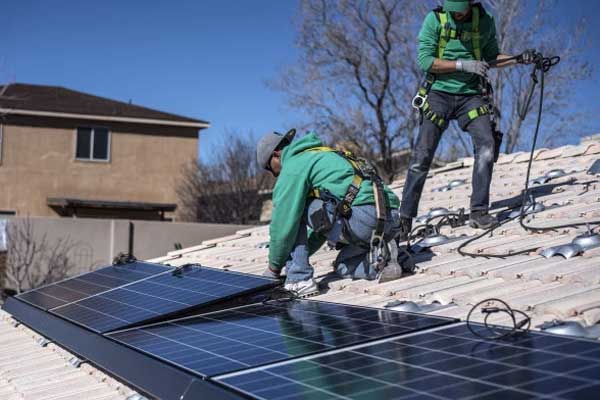MEDFORD/SOMERVILLE, Mass. and BERKELEY, Ca. (Jan. 10, 2019) — Although the popularity of rooftop solar panels has skyrocketed because of their benefits to consumers and the environment, the deployment has predominantly occurred in white neighborhoods, even after controlling for household income and homeownership, according to a study by researchers from Tufts University and the University of California, Berkeley, published today in the journal Nature Sustainability.
While solar energy is a popular, cost-effective, sustainable source of energy that can be deployed at large, utility-scale projects as well as on individual rooftops, deployment of rooftop solar has been uneven.
“Solar power is crucial to meeting the climate goals presented by the Intergovernmental Panel on Climate Change, but we can and need to deploy solar more broadly so that it benefits all people, regardless of race and ethnicity,” said Deborah Sunter, Ph.D., an assistant professor of mechanical engineering at the School of Engineering at Tufts, and the study’s lead author. “Solar energy can be a resource for climate protection and social empowerment.”
Researchers combined data from Google’s Project Sunroof on existing rooftop solar installations across the United States with demographic data, including household income, home ownership, and ethnicity and race, from the U.S. Census Bureau’s American Community Survey. The Project Sunroof data includes information on more than 60 million rooftops and almost 2 million solar installations.
“Advances in remote sensing and in ‘big data’ science enable us not only to take a unique look at where solar is deployed but also to combine that with census and demographic data to chart who gets to benefit from the solar energy revolution,” said Sergio Castellanos, Ph.D., a research faculty at UC Berkeley’s Energy and Resources Group and the California Institute for Energy and Environment (CIEE). “This information allows us to think more deeply about the effectiveness of current policies and approaches to accelerating solar PV (photovoltaics) deployment.”
The study found that for the same median household income:
black-majority census tracts – or neighborhoods – have installed 69 percent less rooftop PV than census tracts (neighborhoods) where no single race or ethnicity makes up the majority (no-majority); and
Hispanic-majority census tracts have installed 30 percent less rooftop PV than no-majority census tracts. Meanwhile, white-majority census tracts have installed 21 percent more rooftop PV than no-majority census tracts.
When correcting for home ownership, black- and Hispanic-majority census tracts have installed less rooftop PV compared to no-majority tracts by 61 percent and 45 percent, respectively, while white-majority census tracts installed 37 percent more.
The study’s authors said more research is needed to help determine the root causes of the differences. They noted that the findings could be useful in developing better and more inclusive energy infrastructure policy and outcomes, including as part of the evolving ‘Green New Deal’ and programs at the state and federal level.
“Our work illustrates that while solar can be a powerful tool for climate protection and social equity, a lack of access or a lack of outreach to all segments of society can dramatically weaken the social benefit,” said Daniel Kammen, Ph.D., former science envoy for the U. S. State Department, and current professor and chair of the Energy and Resources Group, professor in the Goldman School of Policy, and professor of Nuclear Engineering at UC Berkeley. Both Sunter and Kammen have been fellows of the Berkeley Institute for Data Science (BIDS), and Castellanos is a fellow at UC Berkeley´s Data for Social Sciences Lab (D-Lab).
Sunter, D., Castellanos, S., Kammen, D. (2019) “Disparities in rooftop photovoltaics deployment in the United States by race and ethnicity,” Nature Sustainability. DOI 10.1038/s41893-018-0204-z.
###
About Tufts University
Tufts University, located on campuses in Boston, Medford/Somerville and Grafton, Massachusetts, and in Talloires, France, is recognized among the premier research universities in the United States. Tufts enjoys a global reputation for academic excellence and for the preparation of students as leaders in a wide range of professions. A growing number of innovative teaching and research initiatives span all Tufts campuses, and collaboration among the faculty and students in the undergraduate, graduate and professional programs across the university’s schools is widely encouraged.












Comments